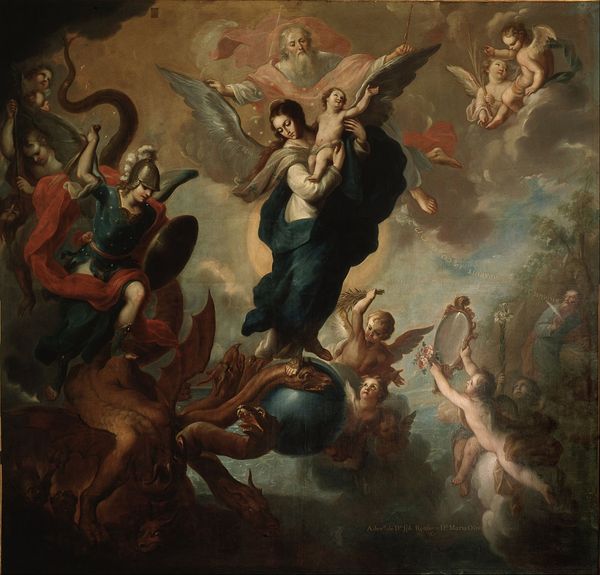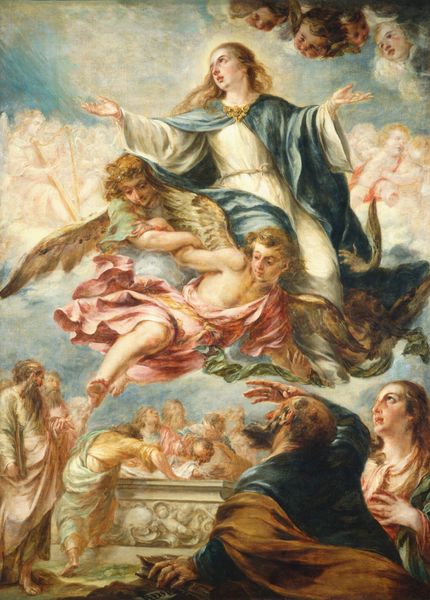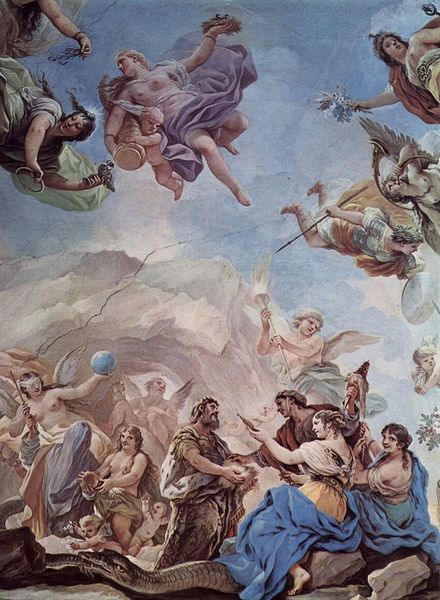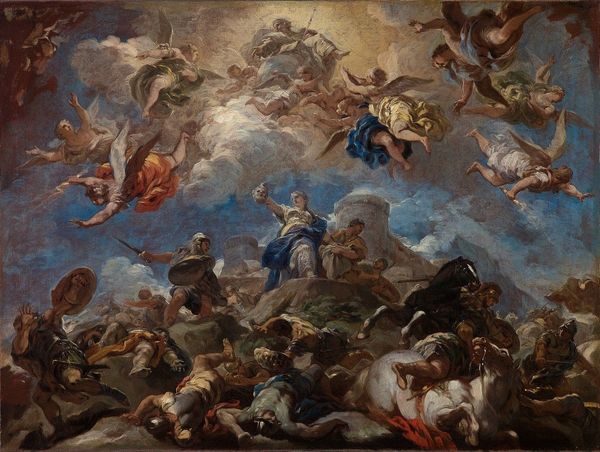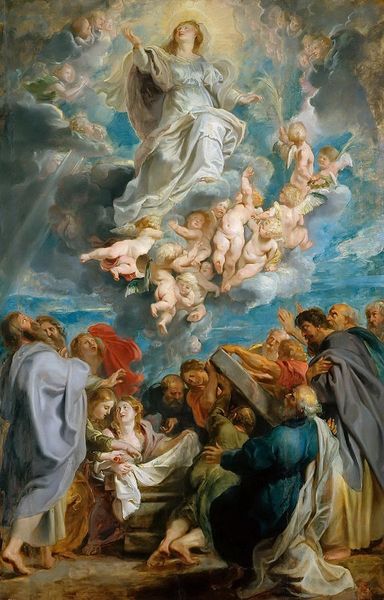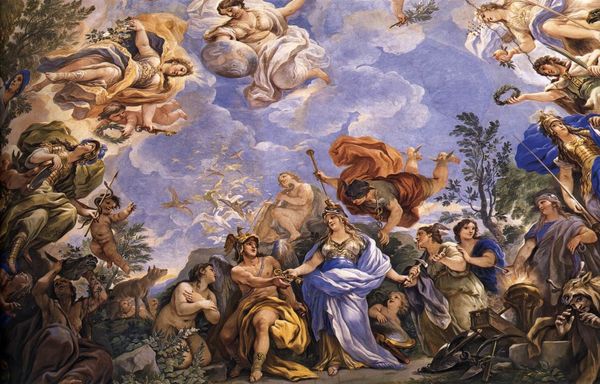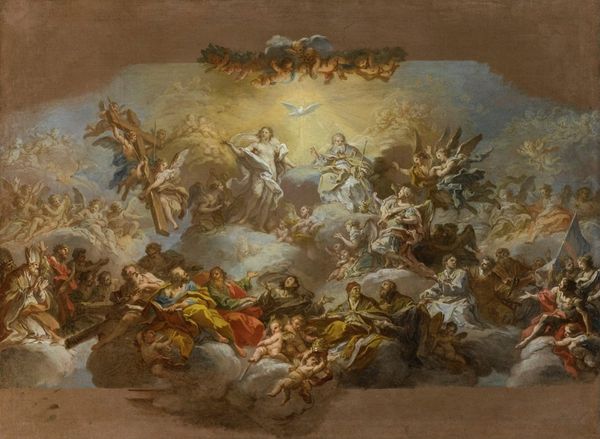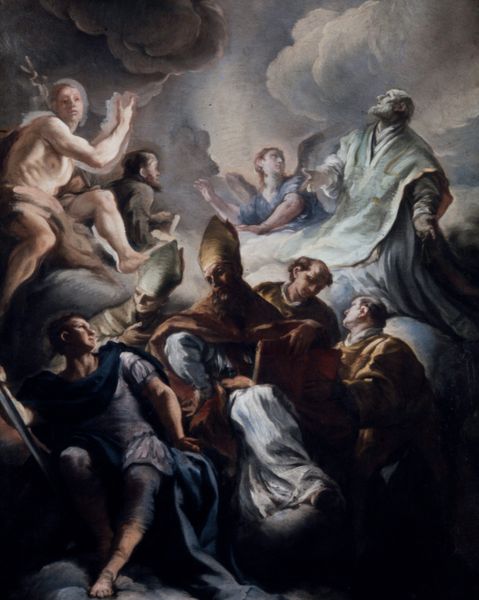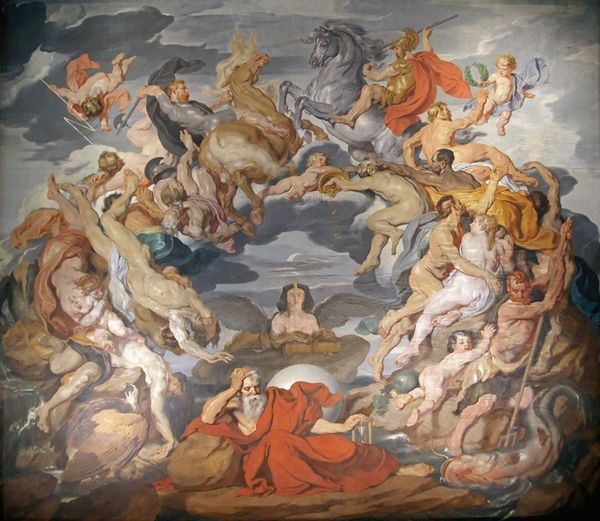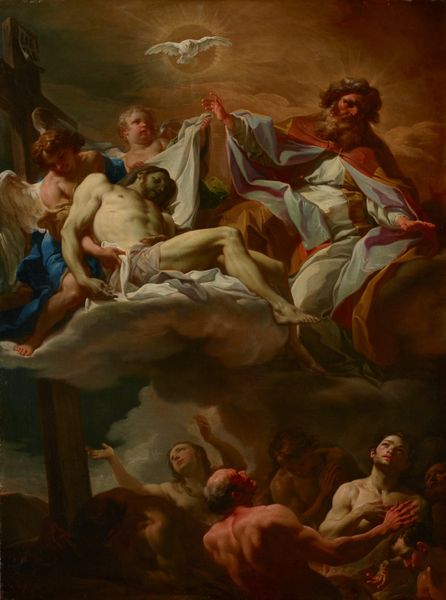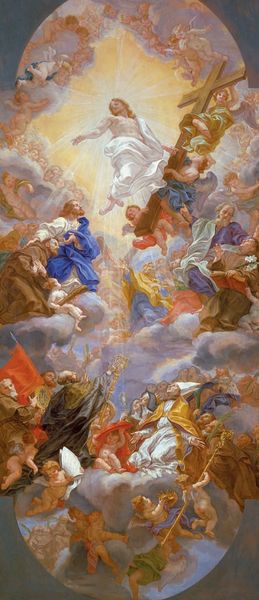
painting, oil-paint
#
portrait
#
allegory
#
baroque
#
painting
#
oil-paint
#
figuration
#
oil painting
#
mythology
#
history-painting
#
italian-renaissance
Copyright: Public domain
Curator: Standing before us is Luca Giordano's "The Assumption of the Virgin," a powerful oil painting created in 1682 during the Italian Renaissance. Editor: My initial reaction is one of ethereal lightness, almost dreamlike. The figures seem to float effortlessly within a soft, diffused light. It strikes me as deeply optimistic, maybe even joyful. Curator: Absolutely. And this moment, the Virgin Mary’s ascent to heaven, is deeply woven into the fabric of Baroque-era society. It represents not only divine grace but the possibilities of female empowerment, of transcending earthly limitations. Consider the social context in which Giordano was working, a patriarchal world where women often found themselves marginalized. This artwork offers an idealized, spiritual vision of female ascension and triumph over those societal constraints. Editor: You are right, it seems the way the figures are arranged creates a sense of upward movement. Notice how Giordano uses diagonals to draw the eye upwards, reinforcing the narrative of ascent. The billowing clouds add dynamism, and there's a skillful use of color—the Virgin's blue robe contrasting beautifully with the golden hues surrounding her. Semiotically, blue often symbolizes purity and divinity. Curator: Furthermore, we can analyze the figures below. Are these witnesses simply reverent, or are they perhaps representative of the church, perhaps society looking up towards a new paradigm, as post-Renaissance Europe slowly began inching away from some of its former constraints and traditions. And let's think about the symbolism in this: heavenly ascension. The material world left behind. What does this artwork tell us about the yearnings and possibilities of the female existence and spirituality at that time? Editor: True, and while the historical and social readings enrich our understanding, the mastery lies within Giordano's manipulation of the paint itself, it’s the visible brushstrokes, the almost Rococo-like delicacy that draws the eye closer and captures a glimpse of divinity in its formal composition and construction. Curator: Well, art always holds multiple truths. Reflecting on Giordano’s Assumption, I appreciate its nuanced social commentary and enduring testament to our hopes. Editor: And I leave seeing it as a work where the spiritual, technique, and the narrative, are sublimely woven together to make this an inspiring piece.
Comments
No comments
Be the first to comment and join the conversation on the ultimate creative platform.
